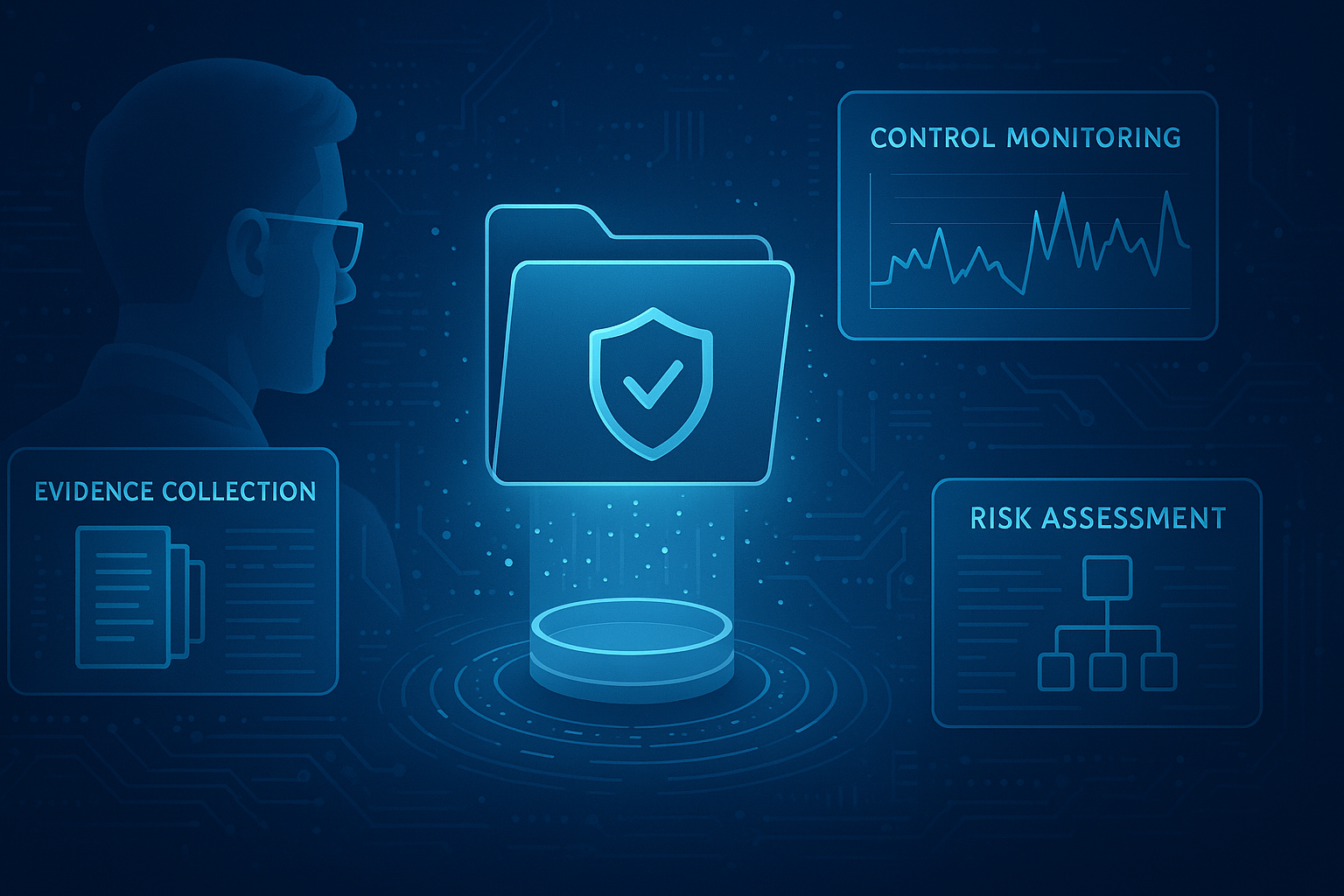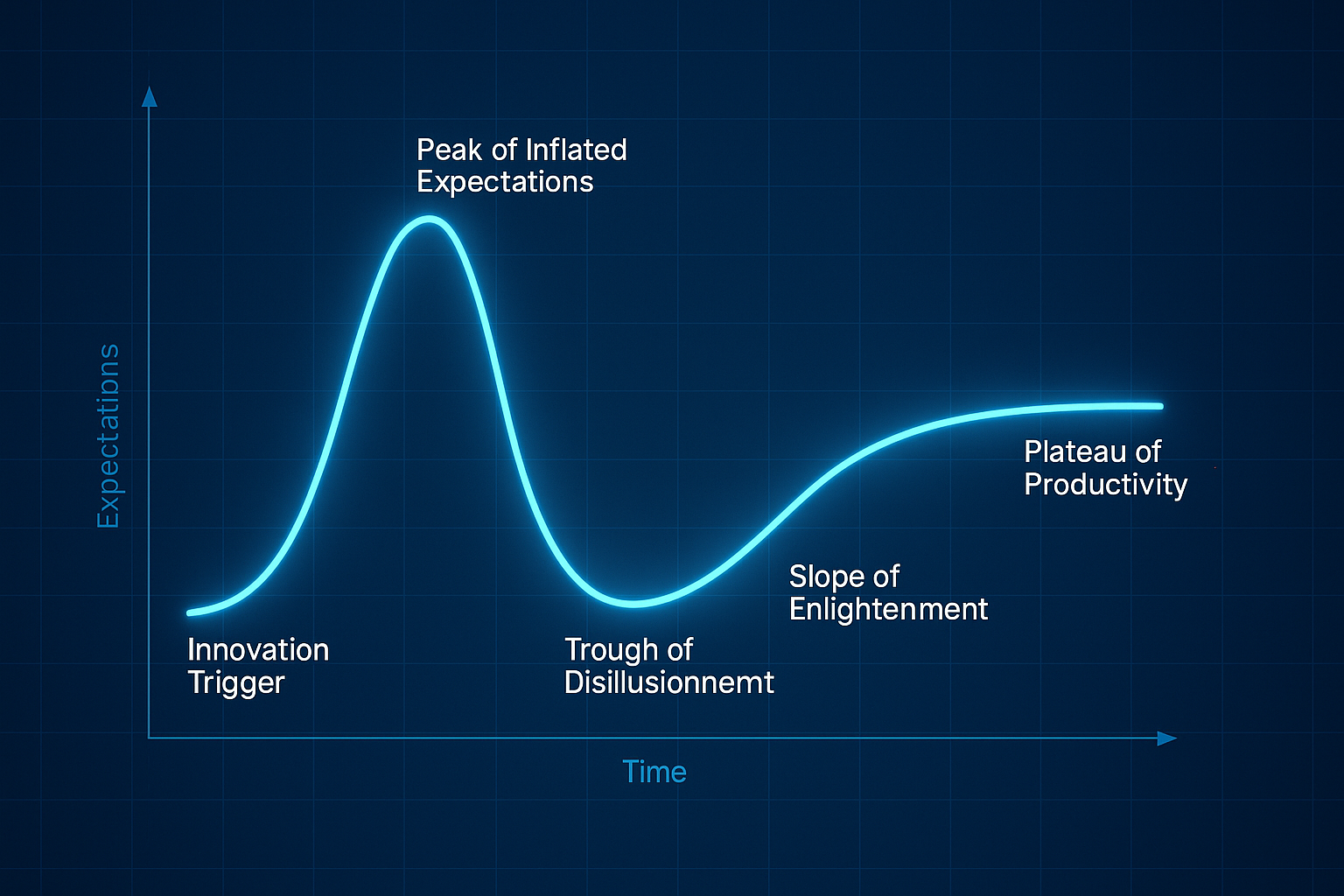The Third-Party Risk Intelligence Challenge
As your external risk ecosystem grows, so does the complexity of managing it. With hundreds, if not thousands, of third parties accessing your systems, sharing sensitive data, or delivering business-critical services, the volume of third-party risk intelligence can feel overwhelming. It often grows faster than you can even ask, “Wait, is there something going on here that I don’t know about?”
The reality is, there’s no shortage of data. There’s a shortage of insight and strategy. Organizations are inundated with third-party risk signals yet lack the means to collect, correlate, and act on them in a meaningful and efficient manner.
Third-party risk intelligence (TPRI) is crucial to any cyber risk or third-party risk management strategy, as it provides a contextualized understanding of the external entities that could impact your business. It involves identifying risk indicators, monitoring them in real-time, and translating that information into actionable insights across cyber risk management, compliance, legal, and operational domains.
This blog explores what third-party risk intelligence entails, how to gather and apply it, and how automated cyber risk intelligence platforms, like CyberStrong, can help you break down silos and build a unified, real-time risk picture.
What Is Third-Party Risk Intelligence?
Third-party risk intelligence involves the continuous collection and analysis of data related to vendors, partners, and suppliers that interact with your organization. TPRI includes financial data, threat intelligence, compliance posture, operational stability, and even geopolitical exposure.
It’s more than just scoring vendors once a year. True TPRI gives you dynamic, contextualized insight into which third parties matter most, why they’re risky, and how that risk evolves. It’s a critical component of a mature TPRM program and a necessity for effective enterprise-wide cyber risk management.
Key Components of Effective Third-Party Risk Intelligence
Continuous Data Collection: Real-time ingestion of both internal telemetry and external risk signals across multiple domains.
Automated Risk Correlation: Intelligent analysis that connects disparate risk indicators to provide comprehensive vendor risk profiles.
Dynamic Risk Scoring: Automated risk assessments based on changing conditions rather than periodic manual reviews.
Contextual Risk Prioritization: Risk ranking that considers business impact, data sensitivity, and operational criticality.
Cross-Framework Integration: Unified risk assessment across multiple compliance frameworks and security standards.
Discover the essential templates for cyber risk assessments and learn how to incorporate them into your strategy.
Best Practices for Collecting Third-Party Risk Intelligence
To make third-party risk intelligence effective, consider the following best practices:
- Segment Vendors by Impact: Start by identifying which vendors pose the greatest business or financial risk. This allows you to prioritize monitoring and cyber risk remediation planning efforts.
- Collect Both Internal and External Data: Blend telemetry from internal systems (e.g., control performance data) with external feeds (e.g., threat intelligence, security ratings).
- Ensure Continuous Monitoring: Risks are not static. You need mechanisms to detect changes in vendor posture, whether due to configuration drift, a breach event, or geopolitical factors.
- Integrate Risk Intelligence Across Functions: TPRI should support cyber, compliance, procurement, and legal functions, rather than operating in silos.
Risk Domains to Consider When Collecting and Monitoring Third-Party Risk Intelligence
A core component of meaningful third-party risk intelligence is identifying which risk domains matter most to your business. Risk domains are specific areas where a third party could introduce vulnerabilities into your environment, whether operational, financial, legal, or reputational.
|
Risk Domain |
Why It Matters |
TPRM Value |
|
Cybersecurity Risk |
Vendor breaches and insecure infrastructure are the top causes of cyber incidents. |
Continuously monitor vendors' cyber posture and exposure to ensure optimal security. |
|
Privacy & Data Processing Risk |
Vendors handling sensitive data pose compliance risks (e.g., GDPR, CCPA). |
Ensure data handling compliance and avoid reputational harm. |
|
Business Continuity Risk |
Vendor failure during disruption can halt operations. |
Evaluate vendor resilience and recovery planning. |
|
Regulatory Compliance Risk |
Vendors under different regulations can create exposure. |
Reduce audit exposure by monitoring legal compliance to ensure adherence to relevant regulations. |
|
Financial & Business Governance Risk |
Financially unstable vendors can default mid-contract. |
Tier vendors use financial health and governance signals. |
|
ESG & Ethical Sourcing Risk |
Unethical vendor practices can cause reputational damage. |
Align vendors to ESG standards and regulatory mandates. |
|
Concentration Risk |
Overreliance on one vendor/region creates failure points. |
Avoid single points of failure via dependency mapping. |
|
Geographic & Geopolitical Risk |
Geopolitical events or disasters can disrupt vendor operations. |
Adapt to macro risks with real-time geopolitical intelligence. |
|
Capacity & Delivery Risk |
Vendors lacking capacity can delay your initiatives. |
Ensure vendor capacity aligns with business growth and expansion. |
By aligning your TPRI efforts with these risk domains, you transition from passive oversight to proactive risk governance, thereby embedding resilience throughout your extended enterprise. Third-party risk management platforms help you do this continuously by correlating internal control performance with real-time external signals across every risk vector.
Key Indicators: Service delivery performance metrics, scalability assessments, resource allocation efficiency, technology infrastructure capacity, growth trajectory analysis.
Software and Tools for Third-Party Risk Intelligence
Gartner’s 2025 Market Guide for Third-Party Risk Management Technology Solutions notes that no single platform currently supports all TPRM use cases and risk domains. As a result, many enterprises adopt multiple solutions, which can lead to a fragmented view of risk.
Modern TPRM platforms must:
- Support continuous risk monitoring
- Enable integration with risk data aggregators
- Provide automated risk tiering and escalation workflows
- Visualize risk exposure across third-, fourth-, and nth-party ecosystems
But managing multiple systems creates inefficiencies. That’s where integrated cyber risk management solutions like CyberStrong stand out.
How to Leverage Automated Assessment Platforms for Third-Party Risk
CyberStrong streamlines the third-party risk intelligence process by automating vendor assessments, embedding real-time data, and continuously mapping against your cybersecurity and compliance frameworks.
Evaluating CyberStrong for Third-Party Risk:
- Continuous Control Monitoring Through CCA: CyberSaint’s Continuous Control Automation (CCA) ingests telemetry from your tech stack to assess technical control posture in real time, automatically. No manual spreadsheets, no back-and-forth static assessments.
- Automated Risk Tiering and Prioritization: CyberStrong ranks third-party risks based on financial impact, embedding cyber risk quantification (CRQ) into every assessment. Whether using the FAIR framework, NIST 800-30 risk assessment model, or a custom model, CRQ is seamlessly integrated from the outset.
- Benchmarking with Real-World Loss Data: CyberStrong connects your third-party risks to actual industry data via Advisen, the world’s largest cyber loss dataset, offered at no additional cost. Additionally, you can integrate with leading threat intelligence feeds to provide real-time awareness of emerging risks affecting specific vendors or industry sectors.
With support for first-, third-, and fourth-party risk intelligence, CyberStrong enables you to continuously assess and monitor your entire digital ecosystem, not just at onboarding.
Aligning Third-Party and First-Party Risk: Why It Matters
When it comes to cybersecurity third-party risk management, many organizations fall into the trap of treating vendor risk as separate from their internal security posture. But in reality, these risk domains are deeply interconnected. A single vendor control failure can directly impact internal systems, expose sensitive data, or compromise compliance, creating a ripple effect that extends across the entire business.
That’s why aligning third-party risk with first-party risk is no longer optional; it’s essential.
CyberStrong consolidates these risk layers into a single, unified platform. By correlating vendor controls with internal risk registers, compliance frameworks, and cyber risk quantification models, CyberStrong delivers full-spectrum visibility across your entire risk ecosystem. Whether you're monitoring control performance, triaging vulnerabilities, or reporting to the board, CyberStrong ensures third-party risk is assessed in the context of your real-time internal posture.
This connected view enables faster decisions, more intelligent prioritization, and stronger resilience, so that a vendor incident doesn’t become your next crisis.
Applications for Third-Party Risk Intelligence in Your Cyber Risk Management Strategy
Third-party risk intelligence isn’t just a checkbox; it’s a strategic driver of enterprise risk reduction. When integrated correctly, it:
- Feeds into Board-Ready Cyber Risk Dashboards: By aligning TPRI with CRQ and business objectives, leaders get a clearer picture of how vendors impact enterprise risk.
- Enables Faster Incident Response: Continuous control monitoring means you’re alerted to vendor breaches or posture changes in real-time, not after the damage is done.
- Informs Procurement and Sourcing: TPRI enables procurement teams to identify and avoid high-risk vendors before contracts are signed.
- Enhances Audit and Compliance Efficiency: Dynamic third-party risk assessments mean you always have up-to-date evidence at your fingertips.
Best Practices for Implementing Third-Party Risk Intelligence
To make third-party risk intelligence effective and scalable, organizations should adopt these proven best practices:
1. Implement Risk-Based Vendor Segmentation
Strategic Approach: Begin by identifying which vendors pose the most significant business, financial, or operational risk. This enables you to prioritize monitoring and remediation efforts where they are most critical.
Implementation: Develop a vendor tiering system based on data sensitivity, business criticality, and potential impact. Focus intensive monitoring on Tier 1 vendors while maintaining appropriate oversight for lower-risk relationships.
2. Integrate Internal and External Data Sources
Comprehensive Visibility: Blend telemetry from internal systems (control performance data, access logs, incident reports) with external feeds (threat intelligence, security ratings, financial data, news sentiment).
Data Correlation: Use automated correlation engines to identify patterns and relationships across disparate data sources that human analysts might miss.
3. Enable Continuous Risk Monitoring
Dynamic Assessment: Risks are not static. Implement mechanisms to detect changes in vendor posture in real-time, whether due to configuration drift, breach events, financial changes, or geopolitical instability.
Automated Alerting: Set up intelligent alerting systems that notify relevant stakeholders when risk thresholds are exceeded or significant changes occur.
4. Break Down Organizational Silos
Cross-Functional Integration: TPRI should support cyber, compliance, procurement, legal, and operational functions rather than operating in isolation.
Unified Risk Language: Establish standard risk metrics and terminology that all stakeholders can understand and act upon.
5. Automate Risk Assessment Processes
Scale Through Automation: Manual assessment processes don't scale with modern vendor ecosystems; leverage automation for data collection, risk scoring, and routine monitoring tasks. Automation is at the core of CyberStrong; the platform empowers you to achieve more in a changing environment, focusing on strategic risk initiatives that reduce risk and improve maturity.
Human-in-the-Loop: Maintain human oversight for complex risk decisions while automating routine risk assessments and data processing.
From Reactive to Resilient Third-Party Risk Management
The third-party ecosystem is no longer a background risk; it's front and center in modern enterprise cyber risk management. With threat actors increasingly exploiting supply chains and regulators demanding greater transparency into vendor relationships, third-party risk intelligence has become mission-critical for organizational resilience.
Organizations that continue to rely on periodic risk assessments, manual processes, and fragmented point solutions will find themselves increasingly vulnerable to supply chain disruptions, cyber incidents, and regulatory violations. The future belongs to organizations that embrace continuous, automated, and integrated approaches to third-party risk intelligence.
The question is not whether your organization needs third-party risk intelligence; it's whether you're prepared to implement it before your competitors gain the advantage of superior risk visibility and management capabilities.
Ready to transform your third-party risk management approach? Discover how CyberStrong can provide continuous, contextual third-party risk intelligence at scale with a customized demonstration tailored to your organization's specific requirements and risk profile.
FAQ: Third-Party Risk Intelligence
What is third-party risk intelligence, and how does it differ from traditional vendor management?
Third-party risk intelligence refers to the continuous collection, analysis, and application of risk data about vendors, suppliers, and partners throughout the entire lifecycle of the relationship. Unlike traditional vendor management that relies on periodic assessments and manual processes, TPRI provides real-time visibility into evolving risk conditions through automated monitoring, correlation of multiple data sources, and dynamic risk scoring that updates as conditions change.
Why is continuous control monitoring (CCM) essential for modern third-party risk management?
Modern threat landscapes and business dependencies evolve rapidly. A vendor that appears secure during an annual risk assessment may experience a breach, financial difficulties, or compliance issues at any time during the contract period. CCM enables organizations to detect and respond to these changes immediately rather than discovering them months later during the next scheduled review cycle.
What are the core risk domains that should be included in a comprehensive TPRI program?
Essential risk domains include cybersecurity and information security, privacy and data processing, business continuity and operational resilience, regulatory compliance, financial and governance stability, ESG and ethical sourcing, concentration and dependency risks, geopolitical and geographic factors, and capacity and performance management. Each domain requires specific indicators and monitoring approaches tailored to organizational risk tolerance and business requirements.
How does automation improve third-party risk assessment accuracy and efficiency?
Automation eliminates human error in data collection and correlation, enables real-time processing of multiple data sources simultaneously, provides consistent risk scoring across all vendors, reduces assessment fatigue for vendors, and scales monitoring capabilities to handle hundreds or thousands of vendor relationships without proportional increases in staff resources.
What challenges do organizations face when implementing fragmented TPRM technology approaches?
Common challenges include data silos between different platforms, inconsistent risk scoring methodologies, manual integration overhead that reduces efficiency, incomplete risk visibility due to tool limitations, vendor fatigue from responding to multiple similar assessments, and inability to correlate risk indicators across different domains or periods.
How does CyberStrong address the fragmentation problem in third-party risk management?
CyberStrong provides a unified platform that integrates cybersecurity compliance automation, cyber risk quantification, advanced framework crosswalking through NLP technology, real-world loss data correlation through Advisen integration, and comprehensive multi-party risk visibility. This eliminates the need for multiple point solutions while providing more thorough and accurate risk intelligence than fragmented approaches.
What emerging trends will shape the future of third-party risk intelligence?
Key trends include the increased integration of AI and machine learning for predictive analytics, evolving regulatory requirements for supply chain transparency, the expansion of monitoring to fourth-party and ecosystem-wide relationships, real-time risk sharing and collaboration initiatives, and the integration of TPRI with broader enterprise risk management and strategic planning processes.





.png)
.png)
.png)
%201.png)
.png)




